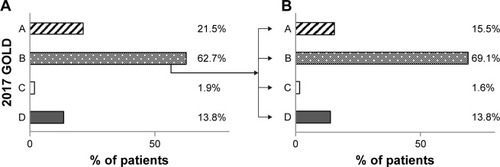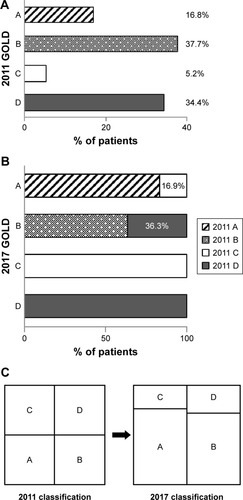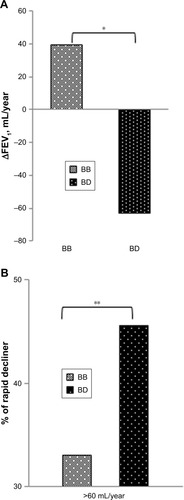Figures & data
Table 1 Baseline characteristics of COPD groups B and D with 2017 classification
Figure 1 The natural courses of GOLD B patients over 1 year.

Figure 2 Distribution of COPD groups by GOLD classifications.

Table 2 Comparison of baseline characteristics between GOLD B patients who remained GOLD B (BB) and those who degenerated to GOLD D (BD), at 1 year post-diagnosis
Table 3 Multivariate analysis of baseline factors associated with progression from GOLD B to GOLD D over 1 year

